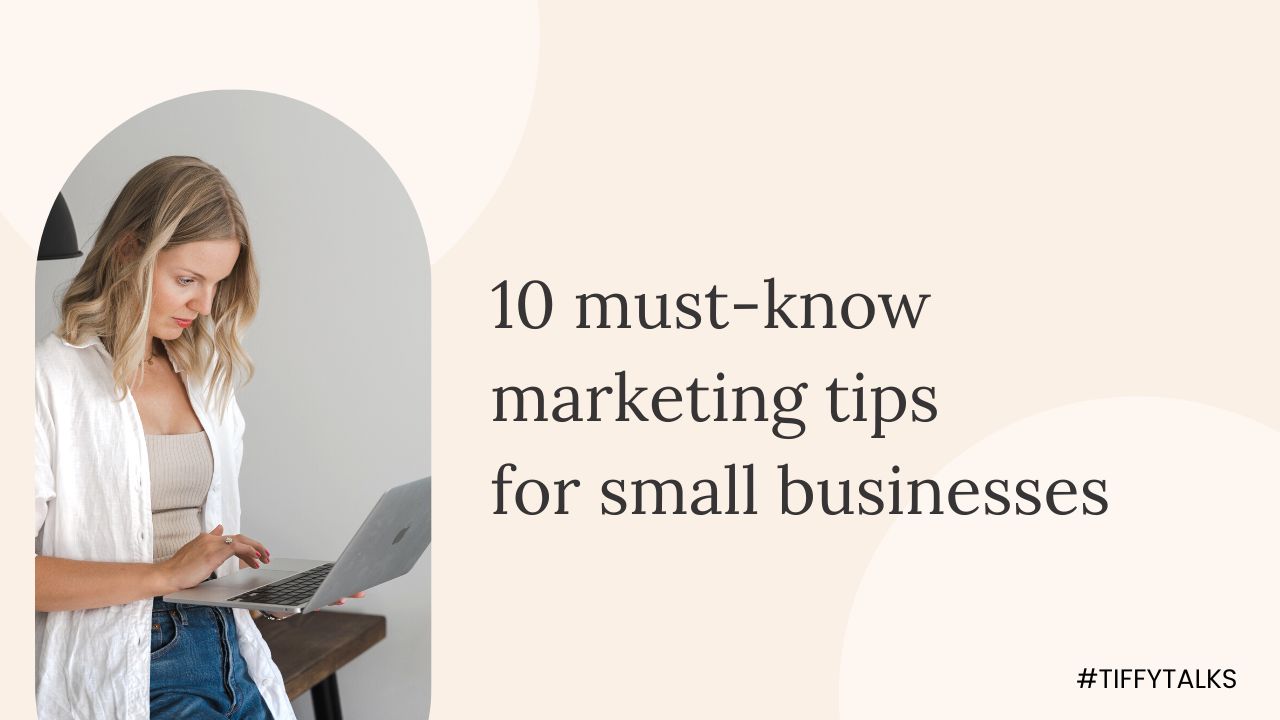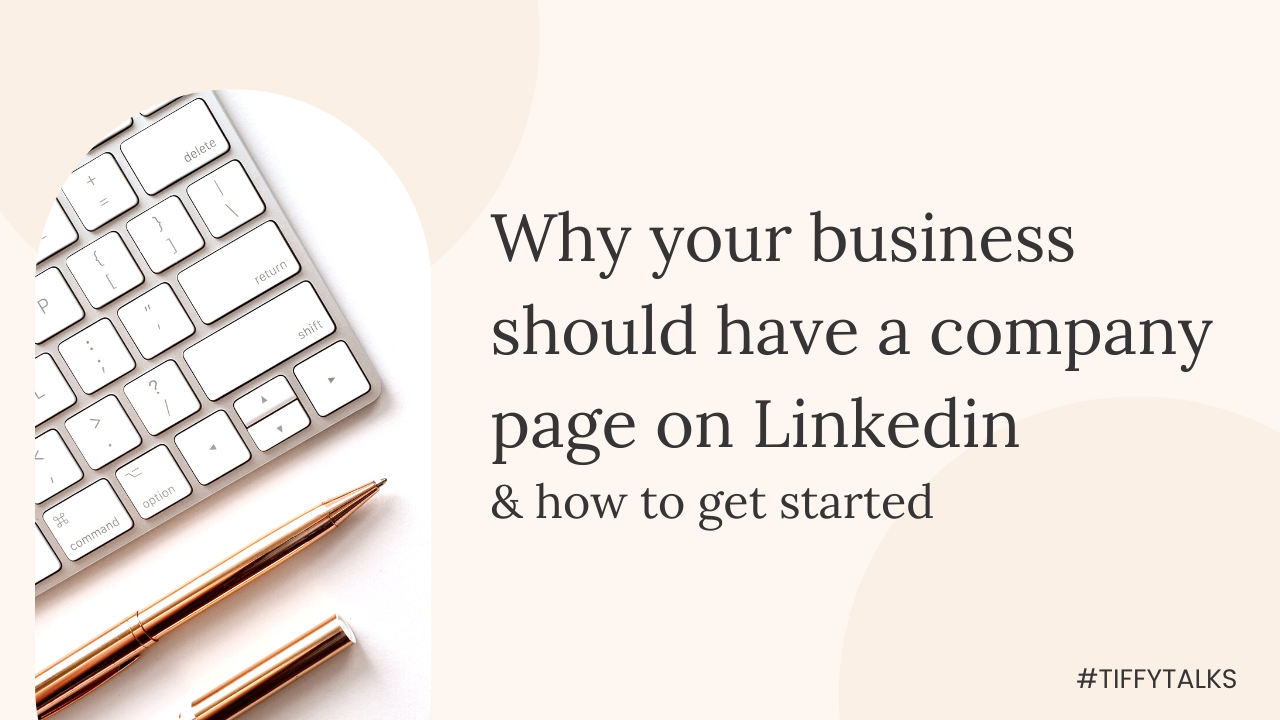10 Must-know marketing tips for small businesses
Figuring out the right marketing strategy can be daunting when you are just starting out as a small business. There are so many aspects to consider, from what message you want to portray with your brand, to which marketing channels to activate and where to best spend your resources.
How do you even get started? I will give you a head start with some of my tips to create a successful marketing strategy. So start by reading this guide outlining 10 must-know tips for small business owners, like yourself.
1. Define your audience
Before you start pulling out marketing strategies and try to make sense of things, you want to start by clearly defining your audience. Think about your ideal customer or client. Who are they? Where are they located? What products or services are they using? Writing out a detailed description of your audience, will give you clarity on how you can best market your business. It should be the first step in developing your marketing strategy, and it leads up to tip number 2 (continue reading).
2. Be where your audience is
Following tip number 1, you now have a better understanding of your audience. This is when you will start to outline the channels they are using to find products or services that fit their needs. Are they for example looking for products recommendations on TikTok? Or are you targeting an audience, that mainly searches for product reviews via a search engine? This insight will make it easier for you to select the right marketing channels for your business, because you want to be visible on the main channels that your audience is active on. I would recommend starting out with activating a few marketing channels in the beginning, and slowly expanding your strategy as you start to see results in your marketing activities.
3. Set clear objectives
Once you start developing your marketing strategy, you want to set clear objectives which outline the goals you want to achieve with your marketing activities. This will define the type of content, and especially the type of advertisements you will be running. An example of a main objective is lead generation. If your goal is to generate leads, you want to build your communication plan around that goal. One tip for tracking the results of this objective is to use a marketing automation platform, which can help you stay on track and reach your goal.
4. Create engaging content
Whatever marketing channels you decide to go for, you want to make sure that your content is so good, that your audience cannot ignore it. Marketing is all about spreading the word on your business and getting your audience to engage with your brand. Put yourself in your target audience’s shoes, and think about what type of content you would want to be exposed to, and most importantly, would make you want to engage with the brand.
5. Tap into the needs
When you are preparing your content, try to get some input from the people around you. As business owners, we are so familiar with what we are selling, that it sometimes can be difficult to write engaging content that taps into your audience’s needs. We are usually really good at giving detailed descriptions of what we are offering, but going back to tip 4, it helps to step into your audience’s shoes and focus on their needs instead. Meaning: focus on communicating how your product or service will benefit your customer, instead of listing out the details of your offer.
6. Work on paid & organic content
Paid marketing is great for reaching a larger audience, which might not have encountered your brand in the past. However, you cannot forget about your organic marketing practices. Paid & organic marketing should always co-exist in order to get the best return on investment. You want to ensure that the messages you are spreading through your advertisements are represented in your organic content as well. That creates credibility and makes your company vision more visible. The added value is that you are creating a community on your organic channels, which is very important and leads to my next tip.
7. Create a community
The days of marketing strategies consisting of advertising only to quickly sell products and services are over, especially when you are targeting millennials or Gen Z. People do not want you to tell them how amazing your product or service is, they want to be told by ‘regular’ people, who are using your products or services. Besides, we all want to belong to a community of likeminded people, and this is where a big opportunity lies for you as a business owner. Try and create a welcoming environment e.g. on Instagram, where you can interact with your audience and they can interact with each other.
8. Think beyond your online channels
As a small business owner with a limited marketing budget, taking your marketing activities online is a smart move. I highly recommend any small business in this day and age to be active online, since there is such a huge potential to reach your customers. However, even with a limited marketing budget, you can reach your audience offline as well. One of the most important ways is through word-of-mouth. As your customers have good experiences with your products and services, they will start sharing that with their network. Try and find ways to always offer the best service, and think about how to motivate them to share their positive experience with their business partners, friends and family.
9. Evaluate & make optimisations
Once you start executing your new marketing strategy, start paying attention to what is working, and especially to what is NOT working. Optimisation is an on-going part of your marketing activities. Your marketing content should always be relevant, refreshing and up-to-date. If you add products or services to your portfolio, don’t forget to re-evaluate your current marketing strategy and see how these new additions could fit into your marketing set-up.
10. Be patient
We have gotten used to getting instant feedback or results through the digitalisation of the world. Even though, when you are running online marketing activities, you will be able to immediately track some results, from my experience it takes a bit of time before you can make any conclusions. Give yourself some time to work out and optimise your marketing strategy. In the beginning it is a matter of trial and error, but once you start to get success, you will see what works for your brand. It is an ongoing learning curve and that is what excites me most about marketing.
If taking on a marketing strategy still sounds a little scary after these tips, feel free to reach out to me. I am a marketing specialist and can help your business, in whatever stage you are at.


